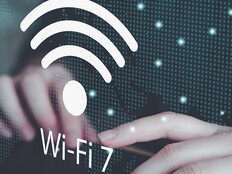Connected systems can not only improve workflows and communication between systems and staff members but also bring the freedom and flexibility for residents to manage their daily routines, according to Keller. For team members, the technology brings less paperwork and better coordination.
Here are five ways senior living organizations can better connect technology to support their staff and residents.
1. Invest in Integrated Systems
Integrating multiple systems can be a headache for senior living staff, but intuitive technology ensures a smooth experience and higher satisfaction, Keller suggests.
“Interoperability doesn’t have to mean chasing complex integrations,” he says. “Sometimes it’s about giving team members and residents a more consistent, intuitive experience across systems they already use.”
At Erickson, for example, team members have streamlined tools so that they can work on scheduling, timekeeping and HR tasks all on one platform.
“Instead of managing multiple systems with different logins and workflows, they have a single place to go, whether it’s to check a schedule, request time off or update information,” Keller says. “That consistency reduces friction and helps teams focus on what really matters: serving residents.”
EXPLORE: Build a healthcare IT infrastructure to meet your organization’s needs.
He says Erickson’s electronic health record platform offers built-in telehealth capabilities in a system that the clinicians already trust.
Service platforms such as Amazon Web Services also integrate well with other applications and support extensibility, Keller says.
Integrated systems are needed and must support the personal devices of residents, including phones, tablets and wearable health devices. Juniper Communities, for example, which has senior living communities in Pennsylvania, New Jersey, Delaware, Texas and Colorado, is exploring newly developed fall monitoring and reduction software that integrates with EHRs.
“You need to understand the integration capabilities of software applications before you purchase them, instead of trying to create workarounds on the back end,” says Donald Breneman, COO at Juniper Communities. “They have to connect and talk to each other as much as possible.”
READ MORE: How can healthcare organizations boost data access in the cloud?
Juniper has integrated its EHR platform into its assisted living environment. Now, the organization can scale its EHR platform across its portfolio. In addition, vendors now offer better application programming interfaces to integrate major platforms for data sharing, Breneman says.
“Initially, if I had done a Venn diagram, it would have been 30 bubbles of different vendors all doing their own thing with segregated data,” Breneman recalls. “It was very difficult.”
The ability of Juniper’s EHR platform to communicate with hospitals, residents and families helped reduce unnecessary transfers of care, according to Breneman.
Using a data lake helps Juniper connect the data and understand how the facility is operating.
“The data lake has been important, because capturing all this data and having it in a workable format is essential for a senior living provider to understand what’s going on, and the data points are innumerable,” Breneman says. “There’s so much going on.”














